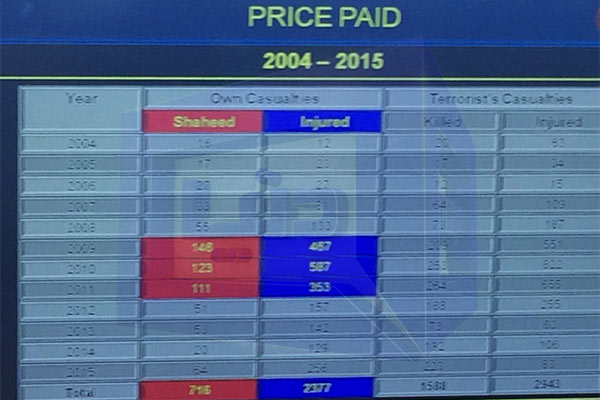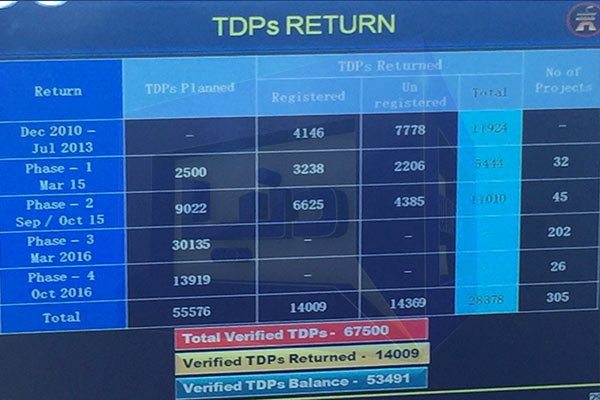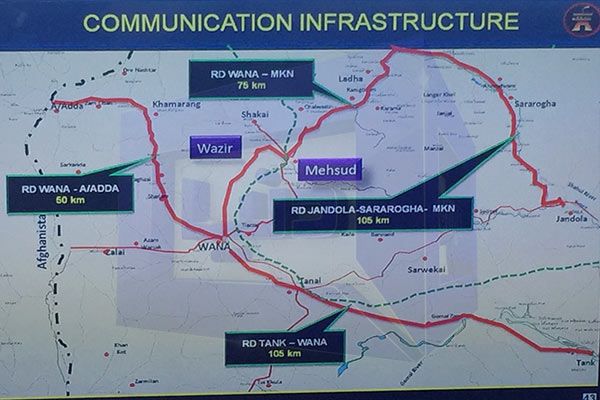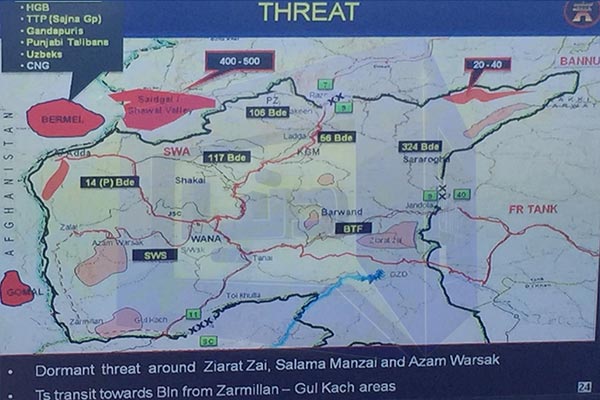#ShawaalKaMahaaz: Wajahat S. Khan travels to the Taliban's 'Last Fortress' in the Shawal Valley

After long years of operations, final battle for FATA looks like it is being fought in Shawal valley
(Web Desk) -- In a first for local and international media, Dunya News’ Chief National Security Correspondent, Wajahat Saeed Khan reports from the ongoing Shawal operation, which was launched last August, a full fourteen month after the launch of Zarb-e-Azb, the Pakistani military s largest counterinsurgency offensive in years.
Embedded with 9th Infantry Division of the Pakistan Army, Wajahat explored various aspects which make this particular phase of the operation more challenging than the others that have been undertaken previously.
There is little doubt that Shawal s is one of the most dangerous terrains in the region, if not the world, for military operations. Nestled between South and North Waziristan, with around 600 sq. kilometres of ravines, gorges and alpine forests in the current operations zone, the area is almost impregnable by satellite imagery, drones and other forms of signals intelligence.
Dunya News Chief National Security Correspondent Wajahat S. Khan reports from Mikh Garh, Shawal, where he was embedded with the 39th Baloch Regiment
Khan assesses the area is "hard to navigate, hard to hold and very hard to conquer," as he travelled from Peshawar, to Wana, to the 117 Brigade Headquarters in the aptly named Asman Panga area of Shawal, altitude 11,500 feet.
.jpg)
The non-metallic roads that Khan took are essential for the war effort. Laid down by the Army s Corps of Engineers, are the back bone of the logistics that propel Pakistani troops further into the valley. Helicopters have to provide aerial protection to motor convoys as they snake across from post-to-post. The 9th Division has even managed to get some old but sturdy T-59 tanks to the area to provide fire support to its 24 units which are stationed in Shawal. Up in the air, Army Aviation Cobra gunships and Bell-412s are deployed for assault and reconnaissance roles, while multi-role Mi-17s get troops and supplies to the conflict zone.
Touchdown, Shawal! Dunya News becomes first news network to land in the deadly and contested valley
Among the other factors that account for the counterinsurgency effort and calculating the toughness of the fight, weather matters as much as terrain. "To the non-acclimatized body, it s a tough ask for anyone," says Wajahat S. Khan. Temperatures of 6-8 degree Celsius have been recorded at 1400 hours in the afternoon, dropping to negative 2 by sundown at 1730 hours.
Logistics are tough to manage in the extreme weather and terrain conditions which make fighting in the field even a tougher task, explains Khan. Fuel, water, rations and ammunitions supplies are the main considerations for Pakistan s army while making battlefield decisions.
.jpg)
"The victory in the battlefield cannot be attributed to armour, infantry, artillery and PAF jets alone," explains Khan. "The actors behind the scenes, including the Corps of Engineers, Army Aviation, the Army Services Corps and others are to be credited as well for their performance in equipping the frontline soldiers with tools to wage war," says Khan.
Dunya News Chief National Security Correspondent Wajahat S. Khan reports from Mikh Garh, Shawal, where he was embedded with the 39th Baloch Regiment
The ever-changing terrain is deceptive, even surreal. "In a 10-minute drive, you can get terrain like the mountains of Nathiagali to stumbling upon the scorched deserts of Tharparkar", explains Khan. "It s the best hideout money can buy you in this part of the world."
The area of Shawal has no other topographic parallel in AF-Pak theater of war. "There is a reason that Shawal is called the last bastion of Taliban ", said Major General Azhar Saleh Abbasi, the General Officer Commanding of the 9th Division.
After long years of military operations which culminated in Rah-e-Rast, Rah-e-Nijat and Zarb-e-Azb, the final battle for the FATA looks like it is being fought in the Shawal Valley.
Explaining the threat of what the Pakistan Army refers to as ‘Tangos’ in the area, Khan says that most remaining elements of Pakistani Taliban, which consist of Taliban s "Sajna" Group, the Taliban s "Shehreyar" Group and the Hafiz Gul Bahadur Group, have ended up taking refuge in Shawal after being pounded by pincer operations from the North Waziristan-based 7th Infantry Division and formations of South Waziristan.
"The fact that Shawal was tasked to be cleared a good 13-14 months after the launch of Operation Zarb-e-Azb is indicative of the opportunities and threats it represents," said Khan. "The Pakistani military had held it before, but redeployments and peace deals had forced them to let it go. Nobody seems to be in the mood for half measures this time around."
Here s the 9th Division s official tally of casualties suffered by the formation against extremists killed during military operations in last 10 years. The Pakistan Army has sacrificed much in the way of duty as explained by the body count below. The terrorists, too, have suffered strategic blows to their manpower. Below is an image released exclusively to Dunya News by ISPR:

Out of 67,500 Temporarily Displaced Persons (TDPs), 14,009 have been returned while 53,491 have yet to return, claims the 9th Division.

Key to bringing the TDPs back is development. Here s a snap of how the Pakistan Army is laying down infrastructure and communication lines across South Waziristan.

The map shows connection of Wana and all roads going through it from the junction to Angoor Adda, Tank and other regions.
Data provided by ISPR explains the dormant and active threats around and beyond Shawal. Pockets of Azam-Warsak(, Zarmillan-Kuch (located near the intersection of Peshawar-based XI Corps & Quetta s Southern Command) and Ziarat Zai pose dormant threats while bright red spots of Bermel and Saidgal/Shawal (located south of intersection between 9 Division and 40 Division) area indicate active threats. The data clearly indicated that the Shawal Valley will be the theatre of operation in the upcoming phase of Zarb-e-Azb.

Watch exclusive coverage from Shawal Valley on tonight s Mahaaz at 10pm only on Dunya News
Post-Op Dispatch: The Shawal Experience, by Wajahat S. Khan
The story has been written by Hanzla Sajid.

